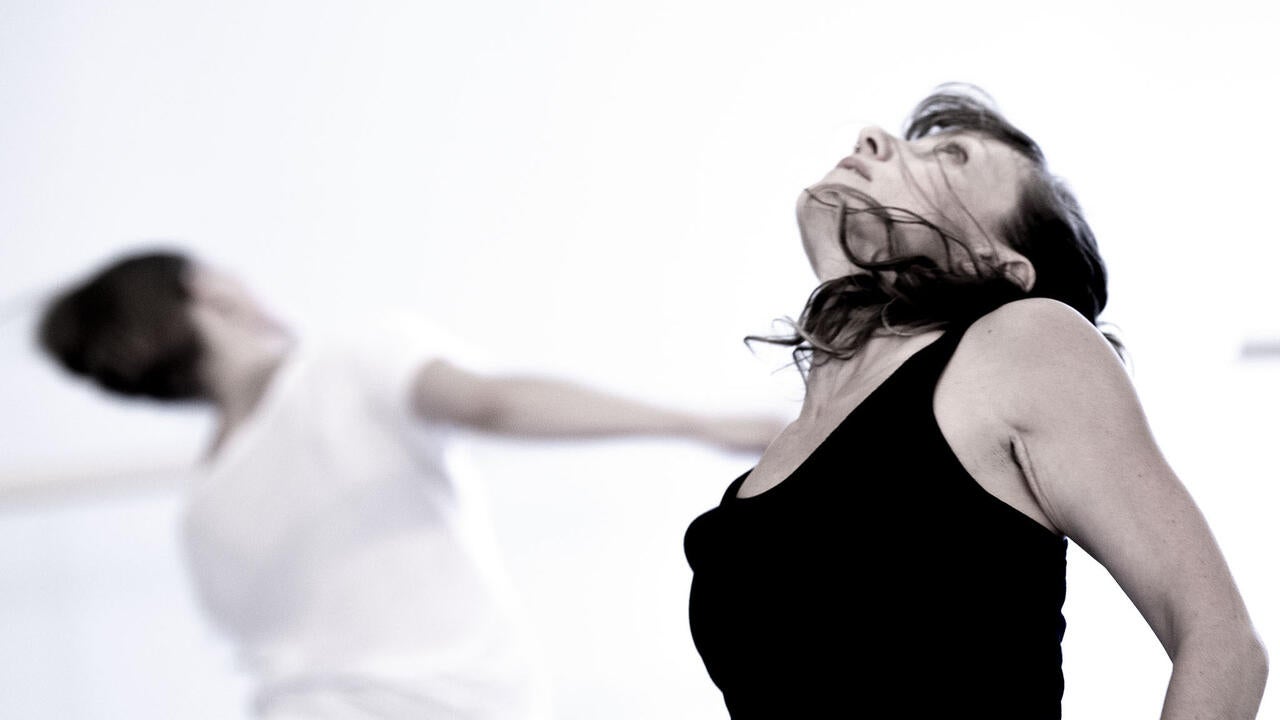
Drawn into the stars
Lucy Rupert (BA ’96) explores the cosmos as the founder of Blue Ceiling dance.

Lucy Rupert (BA ’96) explores the cosmos as the founder of Blue Ceiling dance.
By Claire Mastrangelo Office of AdvancementBy exploring art and science in her work, dancer Lucy Rupert (BA ’96) shines a light in the dark.
The founder of Blue Ceiling dance named her company after reading Michael Ondaatje’s novel In the Skin of a Lion. In one scene, a thief’s friends paint him blue so that he can escape from prison. He blends in with the building and the sky, and slips away.
“I thought that was a really evocative image,” she says. “I think of the sky and the imagination as metaphors of one another. A blue ceiling is like the inside of our mind: our brain is limitless, even though it’s inside of us.”
Lucy found her mission in 2005, when she saw a call to artists to mark the centennial of Einstein’s Theory of Relativity. She launched her first project that looked closely at science, and she gained a new perspective on the field.
Before then, Lucy had equated science with experiments in a lab. However, Einstein’s work was different. His theories reimagined the universe by taking concepts that everyone thought they knew, like space and time, and turning them on their heads.
“I read everything I could get my hands on,” Lucy recalls. “I got drawn into this scientific process that I had never really learned about beyond high school. I understood the thought experiment, and immediately I said, ‘That’s what we do as artists.’ ”
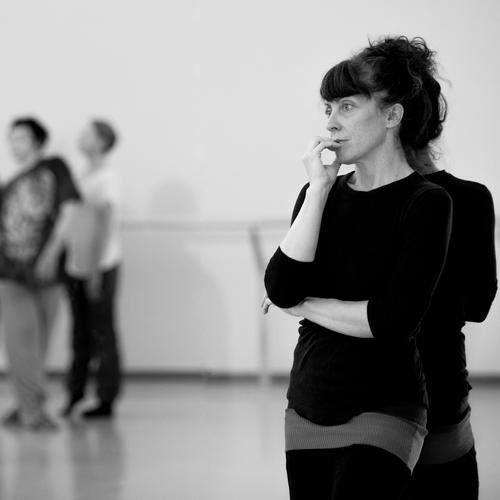
Lucy Rupert in rehearsal for her upcoming production, 8 minutes 17 seconds. All photography by John Lauener.
She wasn’t the only one who saw the parallel. During a conversation at a party, Lucy’s friend, who leads a cellular biology lab at SickKids Hospital in Toronto, made a similar comment.
“He said, ‘we go into the dark and try to light it up a little. Then we go into the next bit of darkness to figure out what’s there.’ ”
Since that discovery, Lucy’s dance has focused on the intersection of art and science. She’s named her new production 8 minutes 17 seconds — the length of time it takes sunlight to reach Earth.
“When I read that, I thought it would be interesting to look at metaphors within the language of science, to talk about how light behaves in space or the movement of the sun,” she says. “There are things happening in space that we don’t really think about, but actually have quite a profound effect on us because they make our planet livable.”
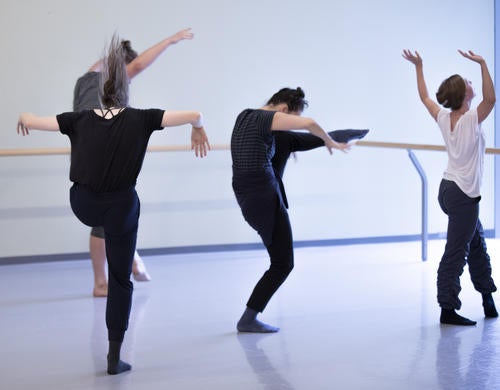
The show runs at Toronto’s Theatre Centre from January 23 to 26, with an ensemble that ranges in age from 25 to 60. Lucy values that diversity because it exposes her performers to different forms of expression.
“So often dancers say that just when you’re figuring out how to connect with the audience through choreography, your body starts to fall apart. We have to reframe how we look at that. Big jumps can be really entertaining and beautiful, but there are all these other ways to communicate through the body that can reach audiences at a deeper level.
“When an ensemble ranges in age, the younger dancers can learn from a 60-year-old who is still very physical and a profound performer. For them to see what she’s able to do . . . there’s something really wonderful about that.”
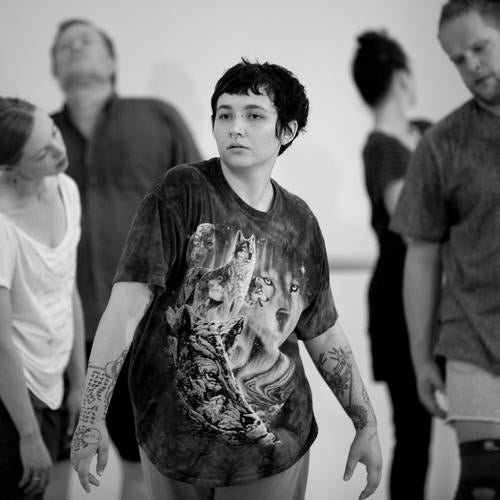
Lucy’s ensemble is diverse in terms of gender and culture, too — a choice she made to help different audiences see themselves in her work. She encourages anyone who is new to dance to approach it with an open mind.
“Dance can have such a profound impact on audiences, if they choose not to worry about whether or not they understand it. Just be in the room and let it come through you. That’s what’s really important.”

Read more
Here are the people and events behind some of this year’s most compelling Waterloo stories

Read more
From transforming solutions for homeownership to advancing health care interventions, Waterloo talent continues to disrupt industries and drive change
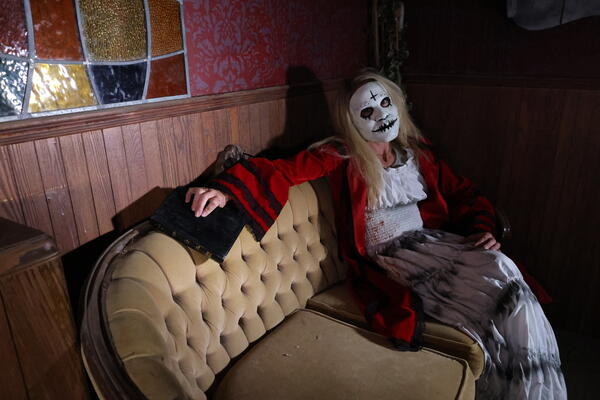
Read more
From pumpkin patches to haunting nightmares, a proud Waterloo alum shares how Snyder’s Farm evolved into one of Ontario’s final destinations for Halloween
The University of Waterloo acknowledges that much of our work takes place on the traditional territory of the Neutral, Anishinaabeg, and Haudenosaunee peoples. Our main campus is situated on the Haldimand Tract, the land granted to the Six Nations that includes six miles on each side of the Grand River. Our active work toward reconciliation takes place across our campuses through research, learning, teaching, and community building, and is co-ordinated within the Office of Indigenous Relations.